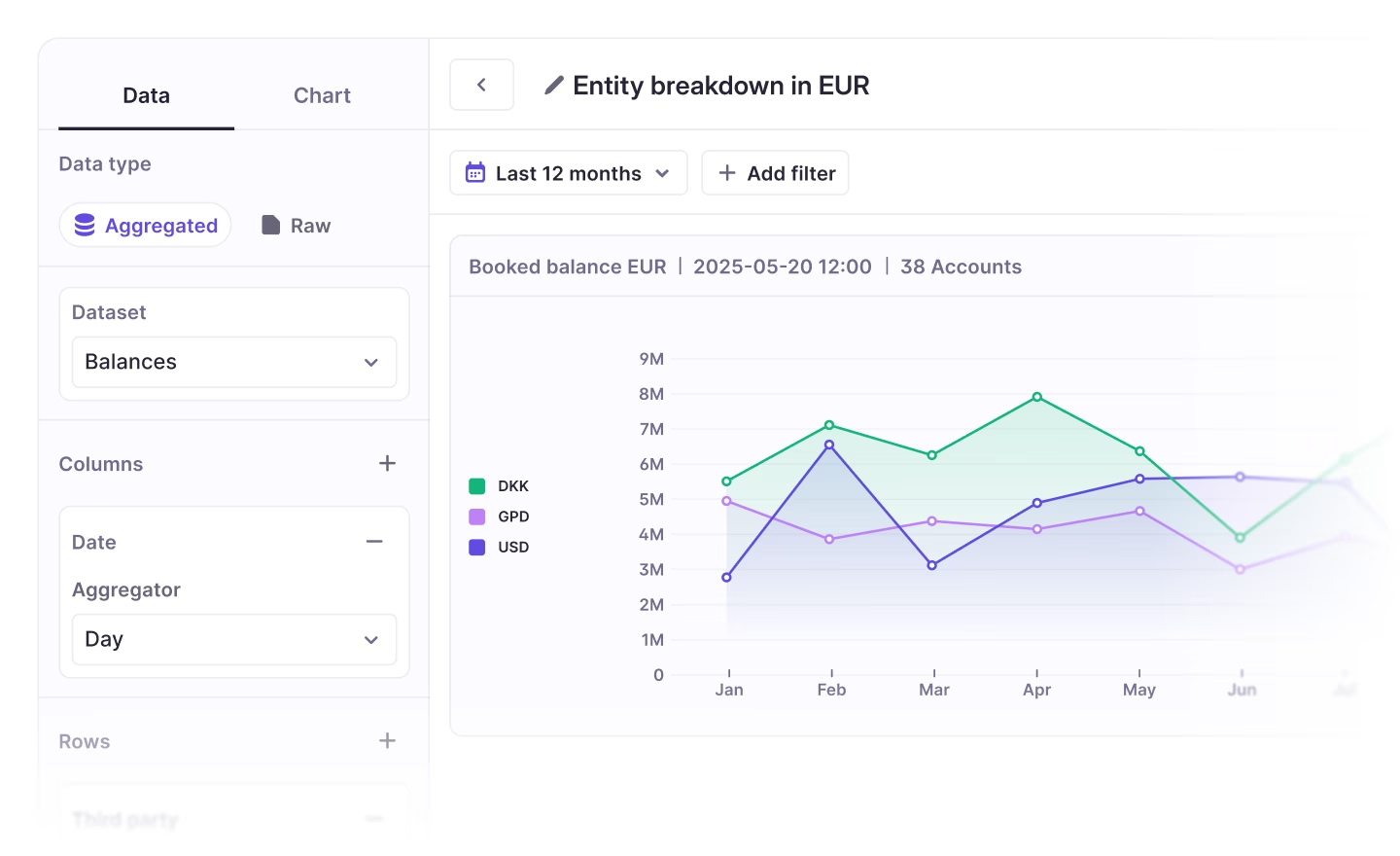What is liquidity management?
Liquidity management ensures you have enough cash to meet financial obligations, respond to market changes as they occur, and support your company’s growth objectives.

Introduction to liquidity management
Liquidity management is the process of ensuring you have the cash available to meet financial obligations, such as loan repayments or money owed to suppliers, while maximizing returns on liquid assets. It requires a combination of cash flow forecasting, working capital management, cash reserve optimization, and the strategic use of short-term financing. Some examples of liquidity management in action are:
- Internal fund management: Strategically moving funds from one area of your business to another to meet a short-term need.
- Scenario analysis and forecasting: Ensuring you have the financial cushioning in place in case the unexpected happens.
- Cost savings: Optimizing cash reserves and using cost-effective short-term financing options.
- Capitalizing on investment opportunities: Ensuring sufficient liquidity to take advantage of investment opportunities as they arise.
- Improved creditworthiness: Enhancing your reputation among creditors, investors, and other stakeholders by demonstrating strong liquidity.
- Greater agility: The ability to respond to market opportunities and challenges quickly.
- Supply chain optimization: Identifying slow turnover or seasonal changes in supply and demand and optimizing supplier payments to coincide with sales peaks.
Liquidity management vs working capital management
Although the two overlap, there are some distinctions. Working capital management focuses on day-to-day operations, such as keeping the lights on. Liquidity management extends to the management of liquid assets to meet financial obligations. It is also responsible for ensuring sufficient liquidity to respond to market changes as they occur.
Liquidity risk
Liquidity risk refers to the potential difficulty you might have in meeting short-term financial obligations, such as your inability to raise cash quickly without incurring a substantial loss. It can be broken down into two pieces:
- Market liquidity: Your ability to raise enough capital through your primary business function
- Funding risk: Your ability to raise capital through investors or creditors
To evaluate your liquidity risk, you simply compare your liquid assets to your short-term liabilities. If you find yourself over-leveraged due to excessive borrowing, you’ll need to find a way of increasing your liquidity while reducing your debt.
Liquidity management in practice
Good liquidity management is achieved through several activities. Some of the key ones are listed below.
Optimizing cash reserves
Holding cash provides immediate liquidity but it comes at the cost of potential returns if not invested wisely. The key is to find the perfect balance between holding sufficient cash to meet your obligations and investing it to generate more revenue.
Short-term financing
Short-term financing, such as a bank overdraft or trade credit, plays a vital role in liquidity management by bridging a temporary liquidity gap. But it should be used sparingly.
Managing liquidity risks
Adequate buffers are essential to protect you from liquidity risks. This is achieved by diversifying funding sources, stress-testing your liquidity positions, establishing contingency funding plans, and keeping a close eye on your liquidity at all times.
Strategic liquidity management
To ensure your liquidity aligns with the long-term needs of your business, liquidity management should consider factors such as growth plans, planned capital expenditure, and market opportunities and threats.
How Atlar can help with your liquidity management
By centralizing all of your accounts in one platform, Atlar provides a complete overview of your current cash balances in a single interface. Using our cash positioning feature, you can view balances by account, entity, and currency or at a group-wide level. This makes it easy to quickly assess your short-term liquidity and take action if needed. Atlar's Cash Flow Forecasting solution then lets you project your cash flow into the future using expected transactions, ERP data, and manual inputs.
Atlar also provides the tools to automate basic liquidity management tasks. You can set up sweeping rules to automatically move cash between accounts based on predefined thresholds, helping you identify and take action on surplus cash balances and potential shortfalls.
You can unsubscribe anytime.
Further reading
See Atlar in action.
Enter your work email to watch a live product demo.


